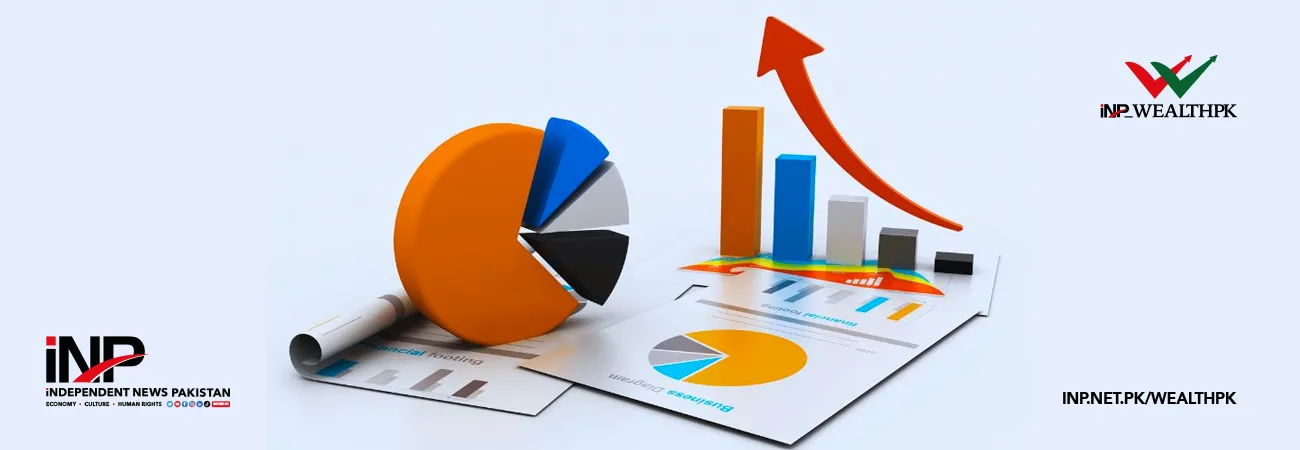i INP-WEALTHPK
Moaaz Manzoor
Pakistan's recent economic gains, driven by strategic fiscal policies, robust remittances, and stable exports, signal a promising foundation for sustained growth and investor confidence, reports WealthPK.

As highlighted in the State Bank of Pakistan (SBP) Governor’s Annual Report for 2023-24, the current account deficit (CAD) has reached a 13-year low, decreasing by a significant 79% from the previous fiscal year, from $3.275 billion in FY23 to $681 million in FY24. This improvement reflects the success of Pakistan’s policies and global demand trends, positioning the economy for sustained growth. The SBP’s report credits fiscal and trade policies for bolstering economic health, supported by remittances that serve as a crucial buffer against the external debt obligations. Exports, particularly in food commodities like rice, have grown strongly due to global demand spikes and India’s export restrictions. This favorable environment has stabilized the economy and boosted the overall economic sentiment. Muhammad Ishaque Khan, Group Internal Auditor at Standard Chartered Bank, said SBP’s tight monetary policy played a role in controlling inflation and stabilizing prices.
“The recent SBP report shows the positive effects of a tight monetary policy, which has helped control inflation and stabilize prices,” Khan said. He emphasized that higher interest rates had effectively reduced the excessive demand, which is crucial for maintaining a stable economic environment for businesses. “Inflation control provides a stable environment for businesses, supporting long-term planning and investment,” he added. However, Khan acknowledged that a tight monetary policy presents challenges, saying that particularly, high interest rates limit credit access for businesses and consumers, potentially slowing the economic activity. He pointed out the importance of a balanced approach as inflationary pressures ease, suggesting that a gradual shift to a more growth-oriented policy will be essential for long-term economic growth. “While the high interest rates have built the investor confidence by reducing inflation volatility, transitioning to a growth-focused monetary policy will be necessary as inflation stabilizes,” he said.
Senior economist at S&P Global Market Intelligence Ahmad Mobeen also anticipated an optimistic outlook, forecasting a 3.4% GDP growth rate for FY2025. While he expects a moderation in agriculture due to the strong base effects, the manufacturing sector’s recovery appears to be gaining momentum, driving broader economic gains. This recovery, he explained, was likely to lift the services sector as well, positioning Pakistan for a more balanced and sustained growth path. Mobeen highlighted a projected decline in inflation driven by moderating food prices and the high base effect from the previous year, giving the central bank more room to reduce the policy rates. “We expect the central bank to lower rates by another 200 basis points by year-end, with cuts likely in both the November and December 2024 Monetary Policy Committee (MPC) meetings,” he said.
Nevertheless, Mobeen cautioned about the potential upside risks, including tax hikes on agriculture, wholesale, and retail sectors, and anticipated increases in energy tariffs under the IMF’s Extended Fund Facility (EFF) program, which could impact both inflation and growth. Analysts agreed that Pakistan’s economic recovery depends on balancing fiscal responsibility and growth incentives. While the central bank’s measures have helped stabilize prices and built investor confidence, transitioning to a supportive growth policy will be crucial as inflation moderates. Overall, with robust export earnings, rising remittances, and supportive fiscal and trade policies, the outlook for Pakistan’s economy remains cautiously optimistic. However, the policymakers must remain vigilant about the potential external and domestic risks.
Credit: INP-WealthPk




